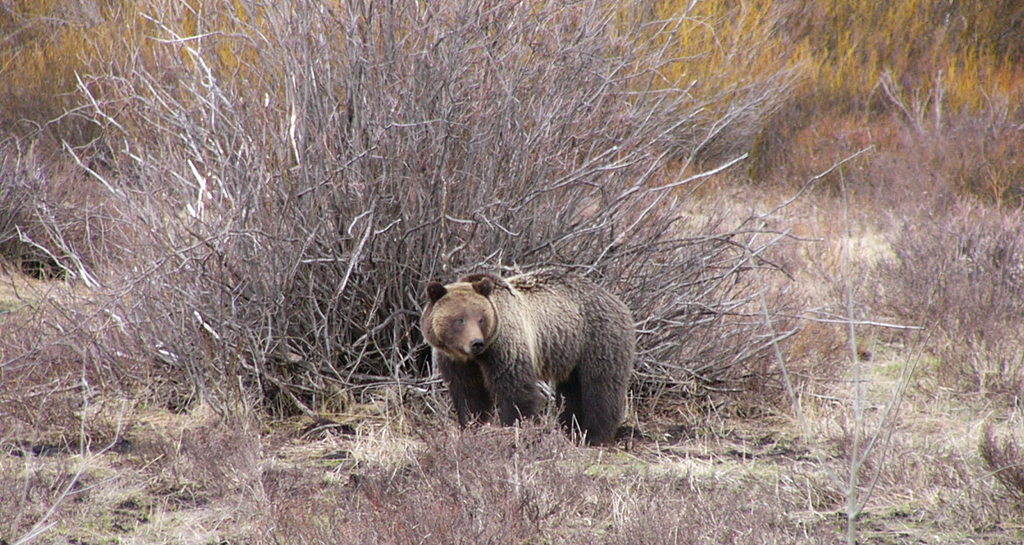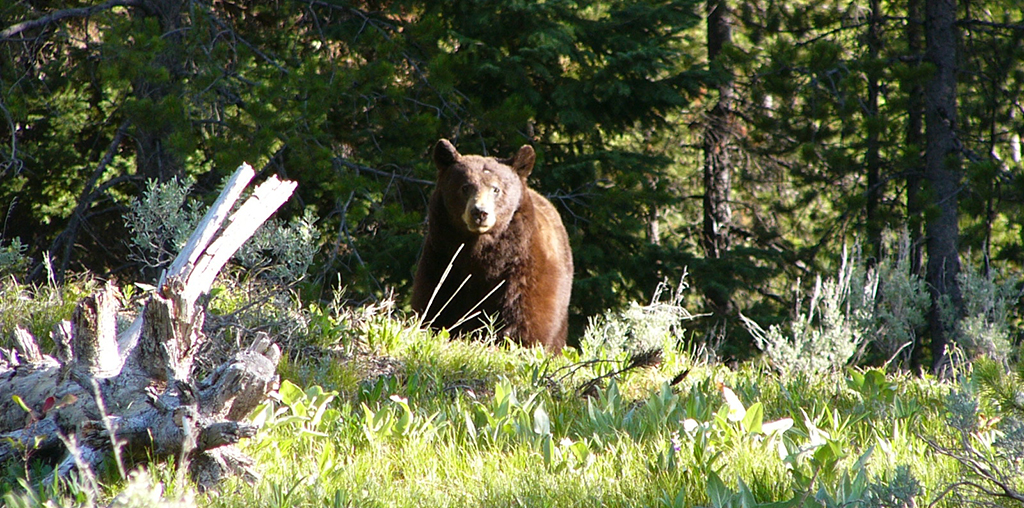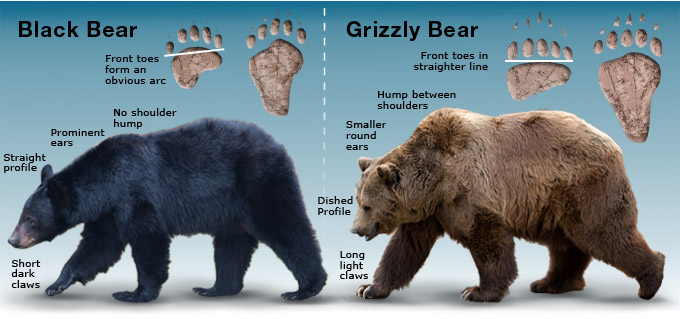Bears are beautiful and magnificent creatures, and spotting one can be a highlight of your trip to a national park or wilderness area. However, bears are dangerously strong and can be aggressive if provoked. While on a wildlife tour in Grand Teton National Park and Yellowstone National Park there are many things you should know in the event you encounter a bear. It is also important to know the differences between Grizzly Bears and Black Bears.
UNDERSTANDING BEARS’ INTENTIONS

Grizzly Bear Encounter while on a Tour of Grand Teton National Park
The media portrays bears as either cute, cuddly creatures or dangerous, intimidating monsters. In reality, bears are neither. Instead, they are like other animals – equipped with methods of protecting themselves and their cubs if they feel threatened.
Also like humans and some other animals, bears are omnivores, eating both plants and animals for food. Because of this, you should be careful to dispose of food properly when camping or visiting a wildlife area, such as a national park. Campers’ who do not properly store food in areas populated by bears are most likely to experience an encounter.
WHAT TO DO IF YOU’RE FACE TO FACE

There are several scenarios in which bear encounters can occur in the wild. Here are a few tips to remember in the event you come face-to-face with a bear.
- If the bear doesn’t know you’re there, back away slowly without drawing attention to yourself or your party.
- If the bear has spotted you and has changed its behavior/acts aggressively, separate yourself from your food and attempt to back away slowly.
- If the bear follows you without swatting or making noise, change your direction, and try to put distance between your party and the bear.
- If the bear gets close to you, attempt to intimidate the bear by shouting loudly, throwing rocks or sticks at it, and making yourself or your party look tall or large.
- If the bear attacks you fight back with any surrounding object and spray it with pepper spray.
DIFFERENCES BETWEEN BLACK BEARS AND GRIZZLY BEARS
Understanding the difference between black bears and grizzlies can help determine how you will act if you encounter them. For example, black bears are great tree climbers, so a tree is not your best refuge if you encounter one that is aggressive. However, black bears are generally tolerant of humans and are more likely to retreat if you intimidate them. Grizzlies, on the other hand, are typically more aggressive, but aren’t as adept at climbing trees.
As their name implies, black bears are typically darker, but their color can range from midnight black to light brown and even show spots of white on their chest. Grizzly bears are often brown, but can also sport dark black or blond fur. For this reason, BearSmart.com notes that the bears’ shoulders, faces, and claws provide the best ways of telling them apart.

Image via. adirondackwildlife.org
Grizzly bears are typically much larger than black bears and feature a shoulder hump, smaller ears, and larger claws than black bears.
Black Bears typically have flatter faces, larger ears, and smaller claws with no distinct shoulder hump.
The wildlife tour guides at BrushBuck Wildlife Tours have several years of experience with bear encounters in the wild and know that you must first respect bears to fully appreciate them. Seeing a bear in a national park or wilderness area can be a thrilling part of a wonderful vacation or a frightening moment that you’ll remember forever. To ensure your experience is pleasant, follow the tips above, and act with caution around bears in the wild.